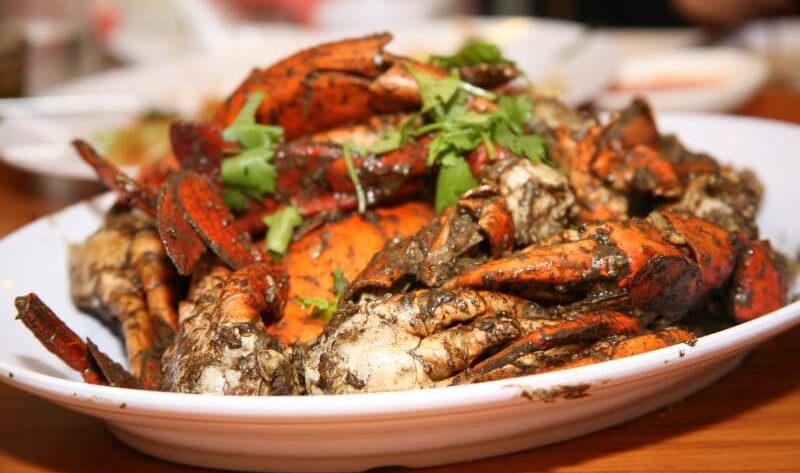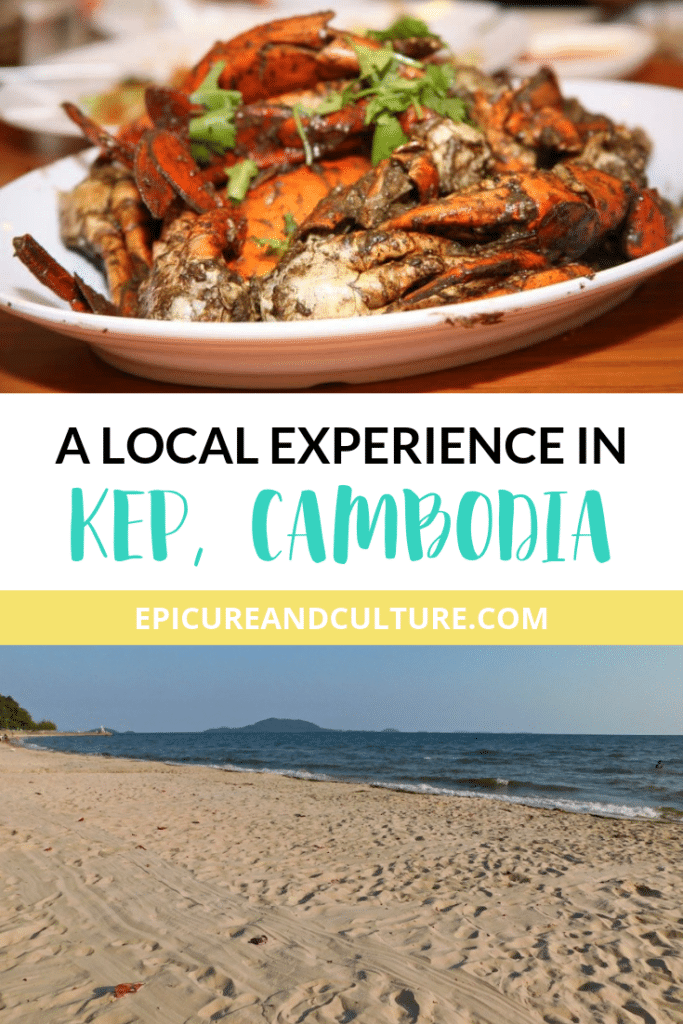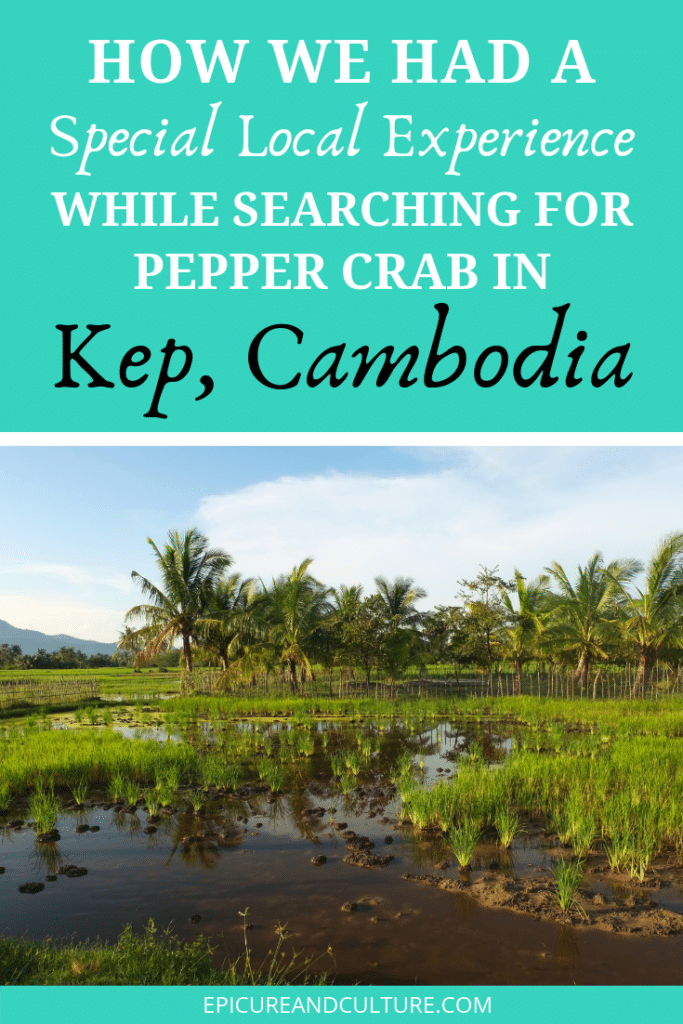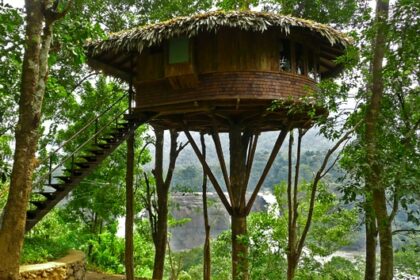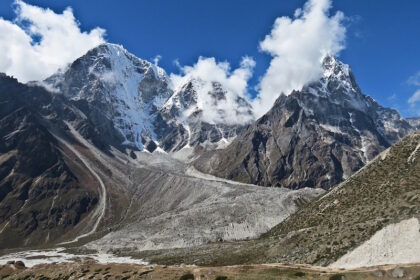By Alicia Raeburn. This post originally appeared on Miles Less Traveled.
Joe and I have a habit of driving distances for food that would make many other people uncomfortable.
In the beginning of our relationship, Joe lived in Hoboken, NJ — a quick hop through the tunnel from NYC.
Except for the fact that it’s New York City, and nothing is ever quick when it comes to driving through a tunnel.
As two people moderately obsessed with eating, we began our love story over meals.
So naturally, living outside of one of the best food cities in the world, it was not uncommon for us to follow and satisfy our impulse craving for meatballs at 11 pm on a Sunday. Or take a two-hour trip deep into Brooklyn for a slice of pizza.
It turns out we are no different when we’re traveling.
Psst, don’t forget to pin this post for later!
We have a habit of doing minimal research about our destination before we get there.
A few must-sees and stopping points are enough to get us there. Then we let the rest work itself out upon arrival.
Combined with our weird food obsessions, we often let the route follow our stomachs.
Exploring Kep Through The Palate
After running a half marathon in Cambodia, it led us to Kep, a small seaside town on the Southeastern coast of Cambodia in the Kampot province.
This area is fast becoming world-renowned for two things:
Crabs and peppercorns, a pairing that has delightfully been combined in a mouth-watering dish best experienced at the original marketplace.
Tourists know about it so it’s not totally off-the-beaten-path, though in our eyes it still seemed pretty undeveloped.
We stayed in the riverside town of Kampot, and while this story focuses on a beautiful day we spent eating crab in Kep, about two hours south, there are many things to do without ever leaving Kampot.
There’s a paved road to get to Kep and a smattering of resorts and guesthouses, but that’s about it.
You will find the standard carts selling seashell trinkets and t-shirts, but right behind that you still find local fishing families pulling crab straight from the sea in large woven traps.
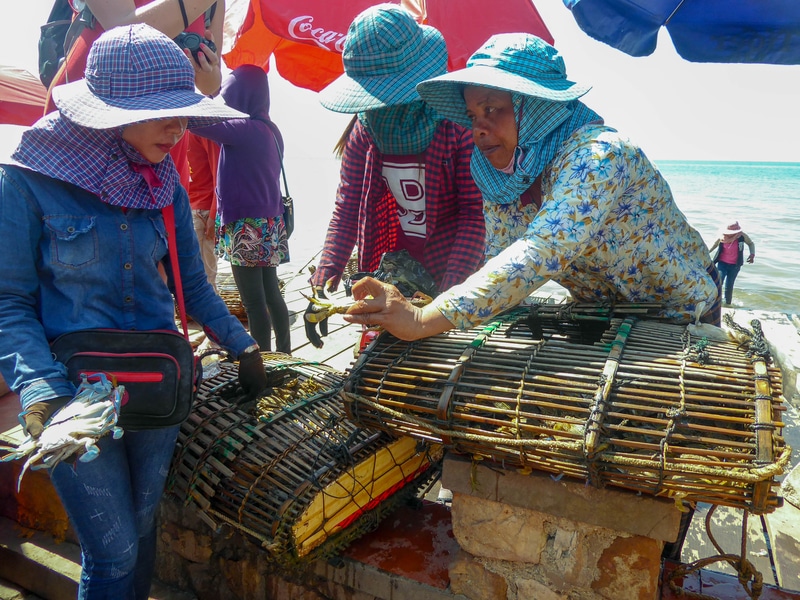
We walked up to one of the traps, seeing a woman pull it out of the water seconds before, and we timidly stood to the side while a group next to us expertly haggled.
Moments passed and a local man standing next to us engaged us in conversation.
“I hate seeing tourists ripped off,” he said. “Let me talk to them.”
We were too confused and overwhelmed to argue.
Besides, he had already started spit firing conversation in Khmer with the woman behind the basket.
Turns out this man’s name was Lee, and we were on our way to spending the rest of the day with him and his family.
Exploring Kep With A Local
Lee was born in Cambodia but moved to Australia almost 40 years ago after surviving the Khmer Rouge genocide and has never left.
He’s a retired chef and owned his own Thai restaurant in Melbourne for 30 years.
After haggling our crab down to what I am sure was still more than he paid, we obediently followed him to the next stop:
A visit to the unsung genius who proceeded to transform our wriggling little monsters into a seafood feast of pure deliciousness.
Within the scattered stalls and tables of the market, a man stood among stalls in the market behind two portable wood-fired burners, each with a large steel wok set on top.
After adding fresh wood kindling and letting the wok heat, he tossed our crabs onto the pan with a generous dousing of oil.
Within minutes, he had added strings of the fresh green peppercorns famous in this province and a chili pepper sauce to our now bright red crabs, handing it over to us in a giant container.
Two more containers filled with white rice later, and we were settled into a table under the shaded tarps of the market with Lee and his two young cousins.
As gusts of wood fire smoke swept over us, we chatted with him about food, family, and everything in between.
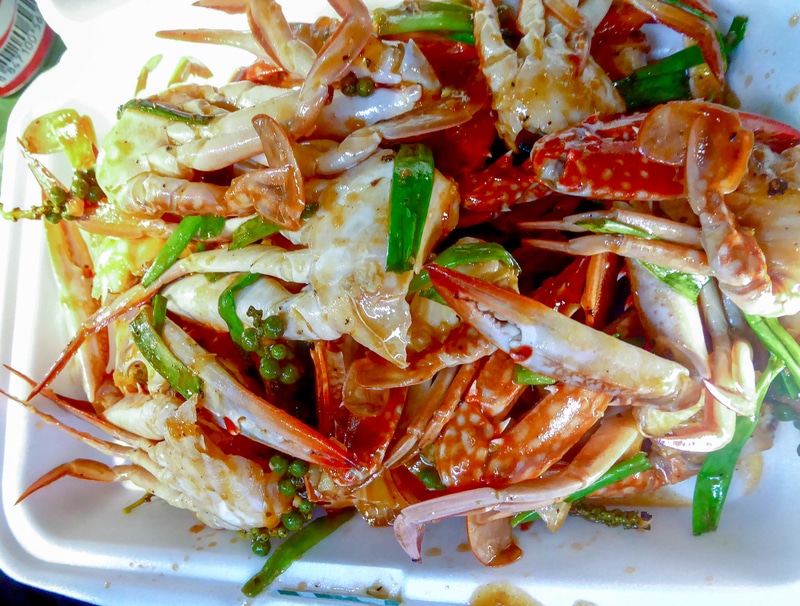
An Unexpected Friend
There was something so familiar about Lee, and we immediately liked him.
Maybe it was the fact that he had driven three hours that morning just to eat crab, or that he was going to drive another hour the next day for a lunch spot he just had to try.
Whatever it was, we loved it.
Lee offered to take us back to Kampot, so we sent our tuk-tuk on its way and spent the rest of the hot and sunny day being driven around the province in a cool air-conditioned car.
He kindly switched the radio to English love songs as soon we got in the car, and before we knew it we were heading up the road listening to Eric Clapton’s “You Look Wonderful Tonight” and listening to Lee laugh and joke with his family in the car, translating for us on occasion.
We visited a local hotel for the night, which unfortunately I did not write the name of down. It was an incredible community-run bungalow site with stilted huts in the water that Lee loved supporting to make sure the money was going directly back into the community.
Lee cared deeply for his country and it’s people, something that came through continuously throughout the day.
He used to stay in hotels, he said, but he saw how tourism was benefitting a few rich and leaving the rest of Cambodia in poverty.
Now, he opted for places like this one, where every dollar went right back to the people who live there.
Every time we thought we were too full to eat more, Lee stopped off somewhere, and we would dutifully eat more.
Cake In Kampot
Back in Kampot, we made a quick pit stop off at a little house on the side of the road for Lee to order cakes — 130 of them to be exact.
This was the last place in Kampot that made them in the traditional way, a recipe passed down by the owner’s grandmother.
The cakes are available for pre-order only. There’s no storefront, but this simple facility with its lone woman operation is famous among locals for being the best sweet shop in the region.
Lee said that people often order the cakes by the hundreds before traveling.
Which I believed because the cakes were unreal.
Wrapped in a special type of palm frond that grows around the brackish waters of the river, coconut and sesame seeds are placed inside with sugar and then grilled.
The result is a slightly sticky, sweet, flattened pancake reminiscent of a coconut macaroon, though is really so much more. We stood in her driveway and devoured every delightful bite, not hesitating to lick any small remains off of our fingers.
Cambodia Memories
On the way back to town Lee asked his young cousin to pull off on a side road because he wanted to show us something.
We slowed down to navigate the pothole-riddled dirt road along the river and looked out at what used to be Lee’s property.
It was farmland with fruit trees dotting the green grass overlooking the river and surrounding mountains.
He had bought it to make a home there but had sold it a few years back when he realized his family in Melbourne would not come back.
Lee stared out the window as he relayed to us his family’s response to him:
“What are you crazy? After living through all the suffering in the Pol Pot era you want to go back?”
He smiled softly to himself and we did not know what to say, so we all said nothing.
Lee did not linger on it. Instead, he took us to see the new bungee jumping, flying fox, and kayaking spot they had set up right down the road which had increased his property value right after he sold it.
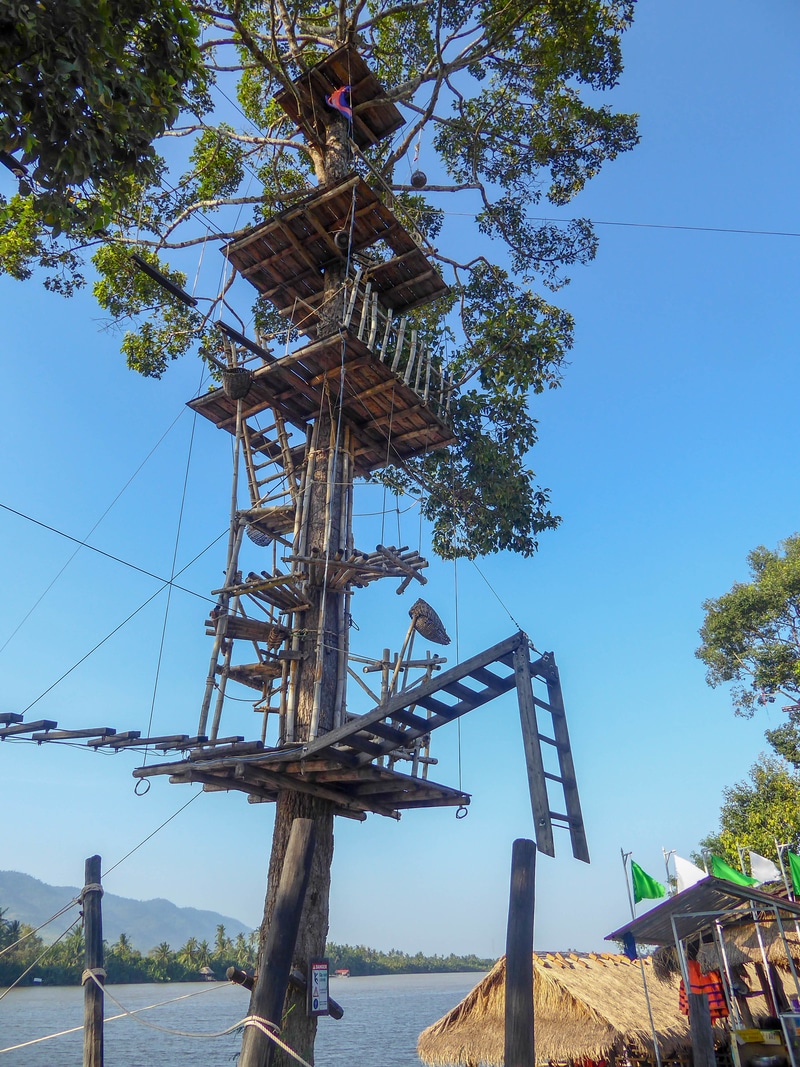
We stopped by his neighbor’s snack stand on the side of the road, where he was able to scour two durians for $20/piece. Apparently, the real Cambodian ones aren’t cheap.
He bought us fresh coconuts that the seller split in two, and we scooped the delicious white meat out.
We found a puppy to play with and entertained ourselves until thanking them with the only Khmer word we knew, “saum arkoun”, much to their delight.
After our day together, Lee and his cousin simply dropped us off at our hotel doorstep, wishing us farewell.
We don’t know his last name nor do we have any way to contact him. What we do have is the memory of one of the kindest people we’ve ever met on our travels.
Joe and I deducted from our conversations that Lee had been a teenager when the Khmer Rouge inflicted a deadly Cambodian genocide in the 1970’s.
It is beyond imagining the kinds of horrors he must have experienced.
And it only added to the mind-blowing fact that Lee appeared happy.
Not just regular happy, but genuinely-in-love-with-life-and-everyone-in-it happy.
If he was not buying us treats, he was making his family laugh or bringing a smile to the face of whoever he was buying food from. He was just pure joy, and you could not help but feel happy when you were with him.
We don’t know why Lee adopted us that day, but are extremely glad he did.
Lee simply stepped in and became a volunteer guide, and quickly, a friend.
It was the type of kindness that makes you question everything and wonder what else you’ve been missing when you’ve been side-stepping those conversations with strangers.
Also, it gets lonely on the road, and these moments with strangers can make all the difference some days.
The crab ended up being one of the best meals we’ve ever had, and the day turned into one of our favorite travel memories of our trip around the world simply due to the kindness of a stranger.
Have you ever deeply connected with locals while traveling?
Further Exploration:
How To Tour Cambodia While Helping Local Children [Blog Stories]
Classic Recipes of Cambodia: Traditional Food And Cooking In 25 Authentic Dishes [Delicious Reads]
Speakeasy Hidden Pocket Scarves [Travel Safety]
Enjoyed this post? Pin it for later!
*Featured image via Clemson/flickr
Jessica Festa
Latest posts by Jessica Festa (see all)
- A Culturally-Immersive Adventure In Mongolia’s Altai Mountains - Jul 8, 2023
- This Recipe Sharing Platform Supports Women In The Culinary Industry (Labneh Recipe Included!) - Nov 5, 2020
- Hiking The Mohare Danda Community Eco-Trek In Nepal - Jun 3, 2020
- 6 Important Questions For Choosing A Responsible Yoga Retreat - May 18, 2020
- How To Create & Grow A Profitable Blogging Business (Ethically) - Jan 18, 2020

